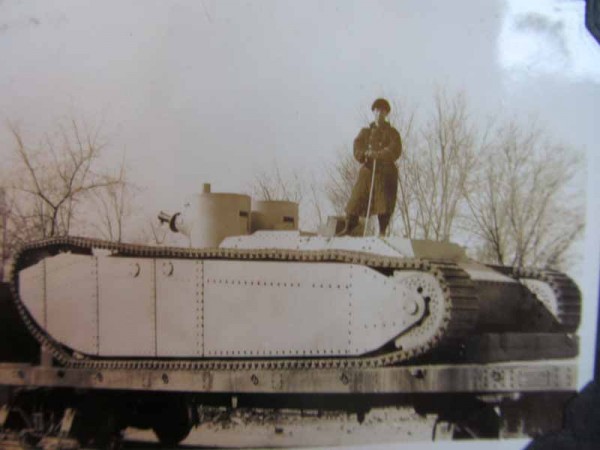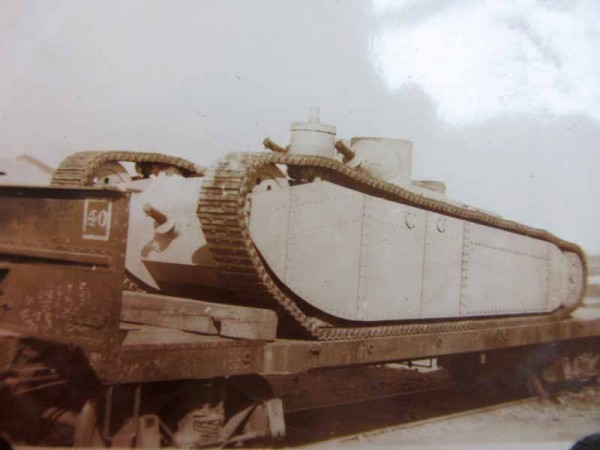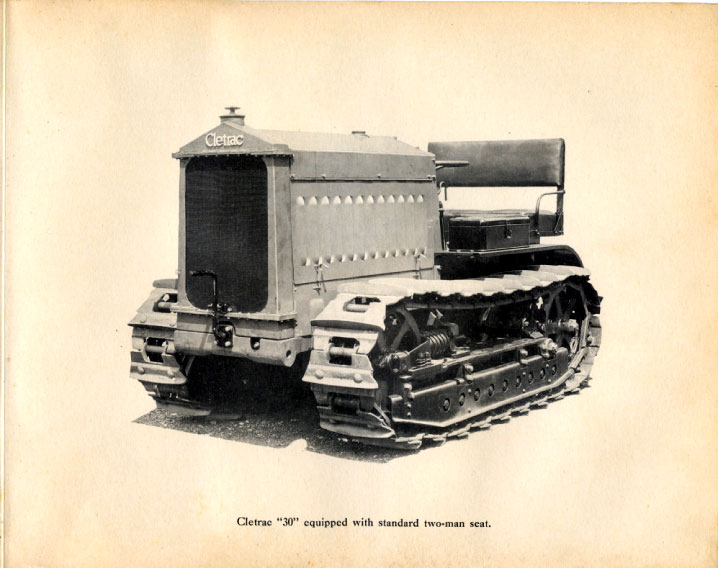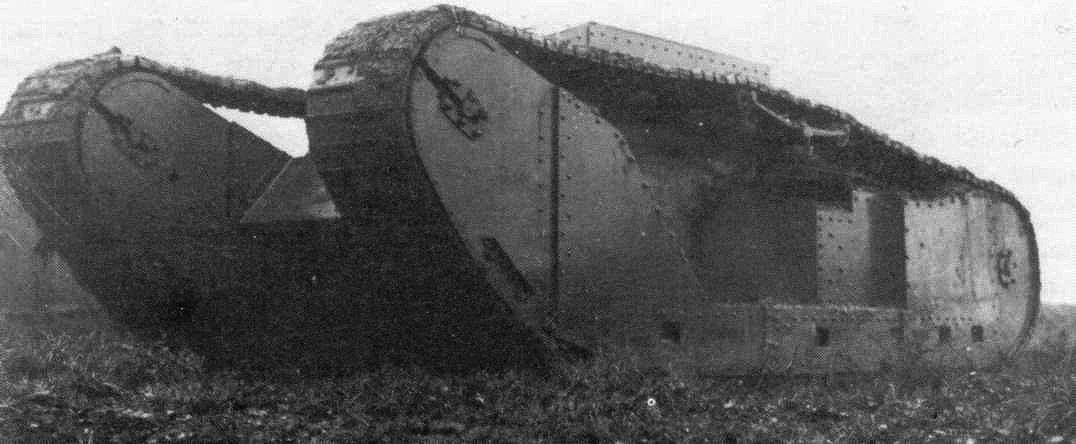Source: http://shushpanzer-ru.livejournal.com/1694109.html
Hello everyone,
“Shushpancery atakuyut” is a pretty interesting LJ blog, showing the pictures of various exotic vehicles. This one caught my eye, as it is not very common for Chinese tank info to appear on the internet, because obviously most of the data is in Chinese. So what we have here is this:
Both of these pictures were taken in China by U.S. Marines. This tank was used by the Chinese in 20′s and 30′s. The author of the blog found a piece of information that two “tank” prototypes, built on tractor chassis were constructed in China and this could be one of them. Converting tractors into armored vehicles was nothing new after all, Soviets did it too and so did New Zealanders (the infamous “Bob Semple”, possibly the worst armored vehicle ever built).
According to the blog, the Chinese were building improvised armored cars ever since 1930, but in 1932, the construction of improvised tanks was also started. In April 1932, Marshal Liu Hsiang formed an armored car and tank unit in Chuntsin. This unit was built around three armored cars and six improvised tanks. Six armored cars were built in Shanghai on the American GMC M31 trucks – armor was added and they were equipped with twin machineguns and 37mm guns in fully rotating turret. Five improvised tanks were built on the Cletrac 20 agricultural tractor chassis and were armed with 7,71mm Lewis machine guns. The last (sixth) tank was built on more heavier platform (Cletrac 30 chassis) and it was armed with a 37mm gun and a Lewis machinegun. Unfortunately, no photos of these vehicles survived.
This is how Cletrac 30 looked like:
As you can see, this is clearly not the chassis used to construct the tank on the first two pictures, so that must be something else. However, this picture gives us a clue:
This is the 1918 Studebaker Supply Tank prototype. In this case, “supply” was not meant as in carrying cargo around, but as an infantry support vehicle. Not much info survived about it: it was a project by Studebaker, based on the experience with the Newton Cargo Carrier tracked tractor vehicle and both vehicles had roughly similiar look. The design was inspired by the British “rhomboid” Mark tanks, but the American vehicle was longer and lower than its Mark V* British equivalent. The inner layout was pretty standard for these tanks: separate compartment in the front, separate gun deck in the middle and the engine compartment (also separated) in the back. The vehicle was powered by an unspecified 4 cylinder aviation engine.
The vehicle was apparently to be armed the was the Mk.V was: with guns and machineguns in sponson mounts. This however did not happen on the prototype. One prototype was built and it was tested in the USA, but the results of the tests are not known. However, one piece of info was saved: the prototype was shipped to France and tested on the front lines. There is also the information that the prototype was actually tested for the British (who would buy it), but this is not confirmed. This happened by the end of 1918, but the war was almost over and so a proposal was made to actually convert the vehicle into an armored troop carrier. But after that, nothing is certain. It is clear the vehicle was never mass-produced or accepted in service, but some sources state that it was scrapped after the war. However, that was probably not the case, as we can see clear similiarities between the Chinese and the American tanks – so clear that it is very likely it is one and the same chassis, possibly converted by the Chinese.
But that is just speculation. Whether it is indeed the same vehicle and how it made its way to China we will probably never know, as not many pieces of info have survived since then. It’s a shame really. Could have been the first documented indigenous tank conversion in China.
Characteristics:
Weight: roughly 20 tons
Crew: probably 6
Armor: unknown
Engine: 4 cylinder aviation engine
Armament: two sponsons with guns and machineguns
Source:
aviarmor.net
http://shushpanzer-ru.livejournal.com






Chinese tanks are so mysterious…
Yay a mention of NZ and NZ “tanks” lol.
Those 2 guns in the turrets, in the first two pictures, seems kinda difficult to aim/shoot with, with those tracks being that high.
And still they were better than german tanks
retard
ignore the troll noob… german tanks are awesome (Nashorn ftw)
there you will found the tractor on witch it is based:
http://www.forumeerstewereldoorlog.nl/wiki/index.php/Newton_Tractors_en_de_Studebaker_tank
That Studebaker (in the fourth photo) is almost a pretty tank. Those twin conical turrets give it immense character. I like it.
Any chance of this being in WoT? Maybe as a low tier Chinese premium?
The first one is almost identical to the FCM 1A in design except that it is likely lighter.
It’s fascinating how information on things like this tank just disappeared, leaving only vague rumors about their fate.
A strong isolationist sentiment and the Peace Progressives’ increasing control of legislative direction in the 1920s made a mess out of American foreign policy of the period — even bigger than the mess we have right now, if you can believe it. However, due to American opposition to European imperialism under the Peace Progressives and the fact that the American government was the first to formally recognize Chiang Kai-Shek’s Nationalist government in 1927, it is entirely possible that the Studebaker prototypes were shipped to the Chinese as a goodwill gesture. Anglo-American relations weren’t exactly stellar during the 1920s, and there were several contingency plans within the US War Department to fight the British. Meanwhile, the Japanese were busy imitating European imperialism, which didn’t endear them to Washington. The implicit message in giving the Studebaker prototypes to the Chinese would have been: “Feel free to make copies of these and use them to kill British and Japanese.”
It would make a very interesting research project if I had the time, which I unfortunately do not.
Or they just simply sold them for cash.
Remember that China was ripped by warlordism in 20′s.
We don’t even know what faction was owner of that tank.
I doubt its the same because 1. the rear end is thinner and 2. the front lacies is mounted lower
“Could have been the first documented indigenous tank conversion in China.”
And possibly the only one that was actually designed entirely by the Chinese (with exception of converting it from a tractor, but that’s excusable, as literally EVERYONE who developed their own tank rather than importing someone else’s converted a civilian machine as a basis for their first few attempts)
First picture:Oh my god a TOG.
I think it’s more likely a direct conversion of a Newton Cargo Carrier than the Studebaker Supply Tank. See how the side plating leaves parts of the drive and idler wheels exposed liked on a NCCwhereas on the SST those are fully covered. NCCs would have been in greater supply to share around too.
My partner and I absolutely love your blog and find many of
your post’s to be exactly I’m looking for. Does one
offer guest writers to write content for you
personally? I wouldn’t mind publishing a post or elaborating on a few of the subjects you write regarding here.
Again, awesome website!
It’s very simple to find out any topic on web as compared to textbooks, as
I found this paragraph at this site.
Feel free to surf to my webpage :: gourmet chocolate gift basket – http://christmasgifttips.weebly.com,